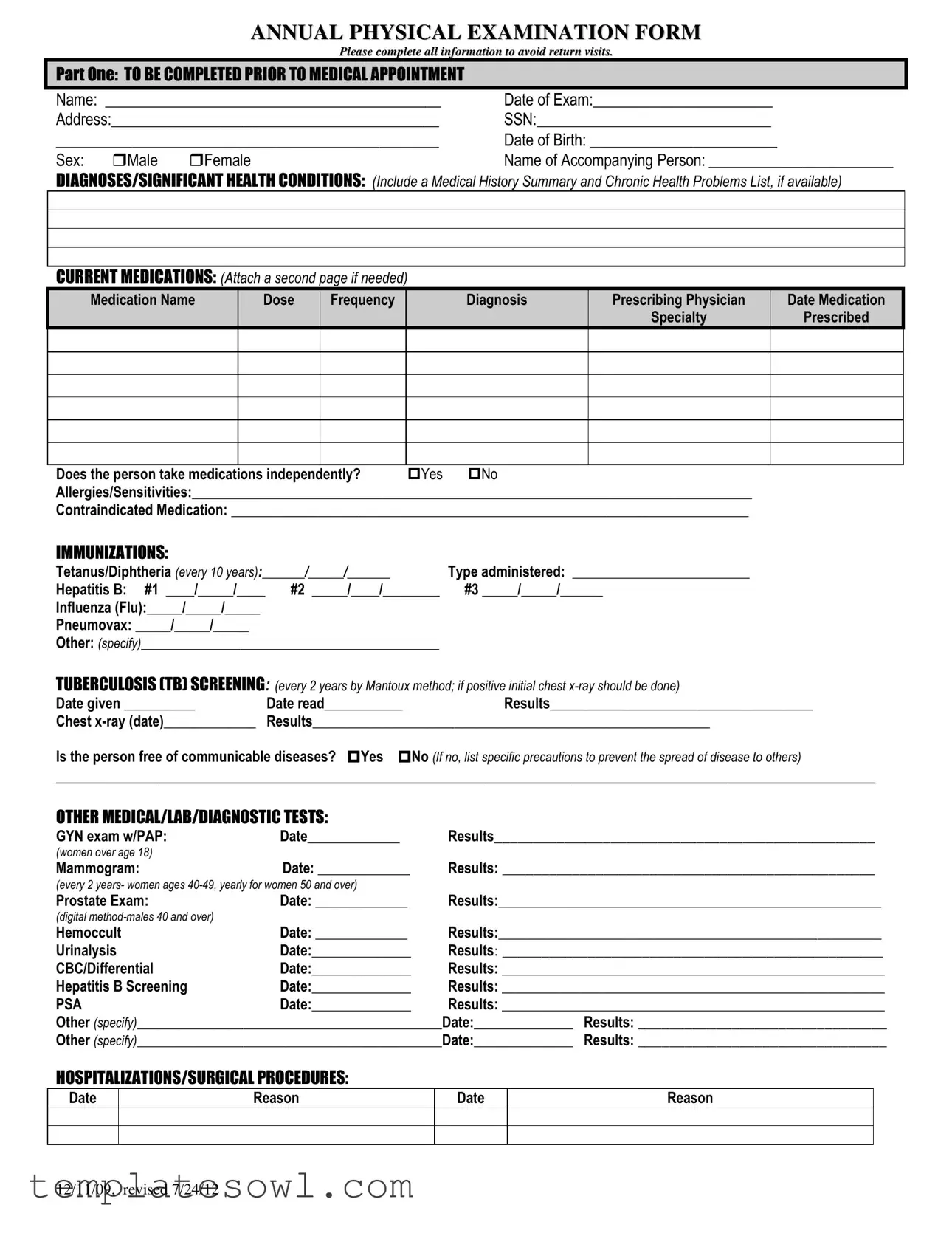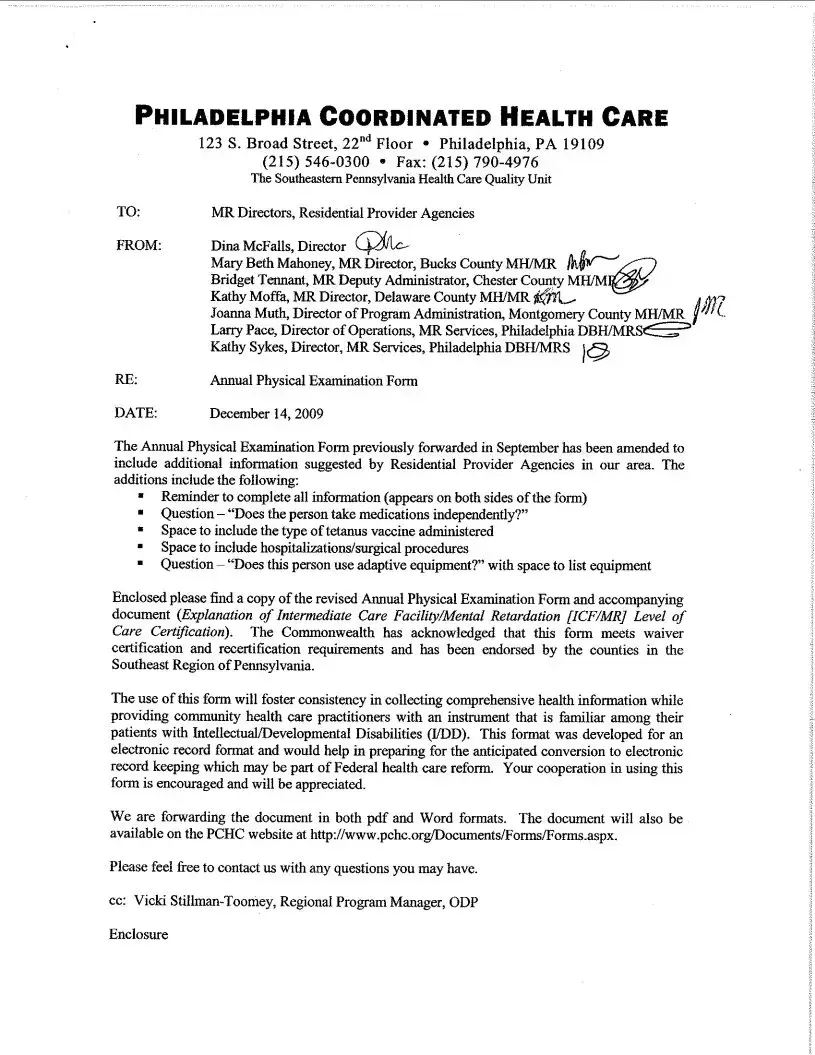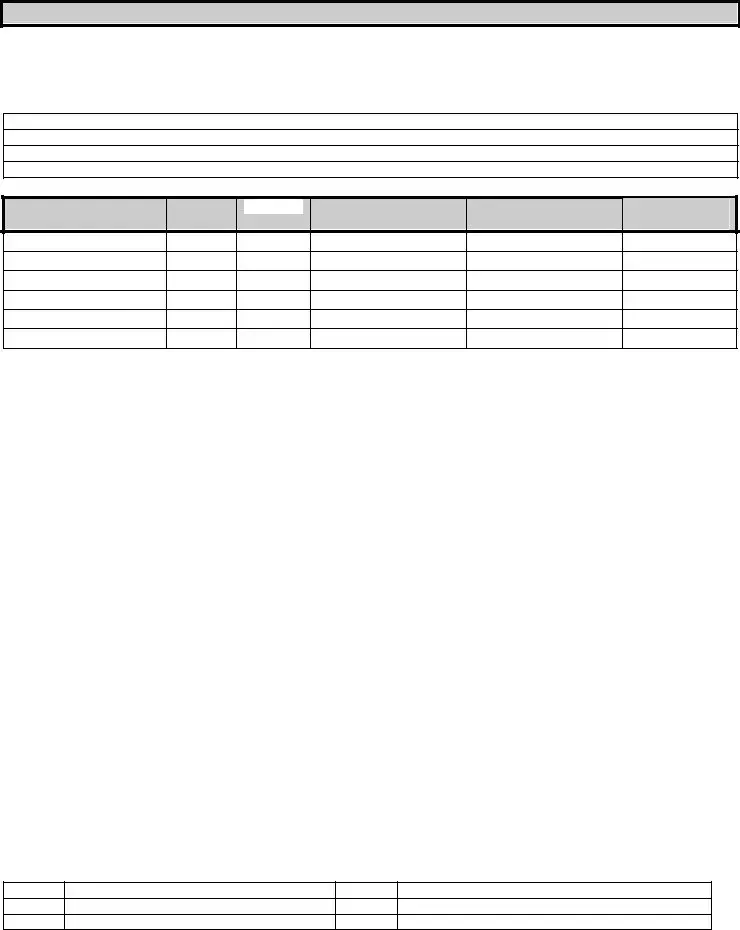What is the purpose of the Annual Physical Examination form?
The Annual Physical Examination form is designed to gather essential health information about an individual before their medical appointment. By completing the form, patients ensure that healthcare providers have all necessary details regarding their medical history, current medications, and any significant health conditions. This information helps in providing a comprehensive and effective evaluation during the visit.
Who should complete the Annual Physical Examination form?
It is recommended that the individual who is undergoing the examination complete the form. If the person is unable to do so, an accompanying person may fill it out on their behalf. However, it is vital to ensure that the information provided is accurate and thorough, as this will directly impact the quality of care received during the physical exam.
What details are required under 'Diagnoses/Significant Health Conditions'?
This section requests a summary of the individual’s medical history, including any chronic or significant health problems they may have. If the patient has previous health records or lists of chronic conditions, they should include them with the form. This allows the healthcare provider to understand the patient’s health status better and identify any necessary follow-up actions.
Are current medications and allergies necessary to include, and why?
Yes, it is crucial to include all current medications along with doses and prescribing physicians. This information helps the provider understand potential interactions during treatment. Additionally, listing any known allergies or sensitivities is essential to prevent adverse reactions during medical assessments or procedures.
How often should immunizations be updated, and what should be included?
Immunizations should be updated as per the recommended schedule for each vaccine. This section of the form allows individuals to record dates and types of vaccines received, including tetanus, hepatitis B, and flu shots. Keeping this information current is essential for overall health and community safety.
What is the significance of tuberculosis (TB) screening?
The TB screening is essential to identify whether an individual has been exposed to the tuberculosis bacteria. This screening should be done every two years using the Mantoux method. If results are positive, a follow-up chest x-ray is usually necessary. Addressing TB is vital for both personal and public health.
What is meant by ‘Evaluation of Systems’ in the physical examination section?
The 'Evaluation of Systems' section allows the healthcare provider to assess different body systems and determine if they are functioning normally. The patient should indicate whether they have experienced any issues with each system. This comprehensive evaluation helps detect any underlying health concerns that may need further examination.
What are recommended health maintenance practices?
Health maintenance practices include a variety of recommendations based on the individual’s needs. These may involve scheduling regular lab work or tests, engaging in appropriate treatment or therapies, and maintaining physical activity and proper hygiene. Adequate weight management and a balanced diet are also crucial for overall health. This information contributes to a well-rounded approach to health care.
What should be done if there is a change in health status from the previous year?
If there has been a change in health status, this should be clearly indicated on the form. Patients should specify what changes have occurred. This transparency allows healthcare providers to address new health issues promptly and adjust the care plan accordingly.
How is the recommendation for ICF/ID level of care determined?
The recommendation for ICF/ID level of care is based on comprehensive assessments of the individual’s health needs and daily functioning capabilities. A qualified healthcare professional will evaluate whether the individual meets the necessary criteria. If the recommendation is applicable, it helps ensure that they receive appropriate support and services tailored to their needs.



